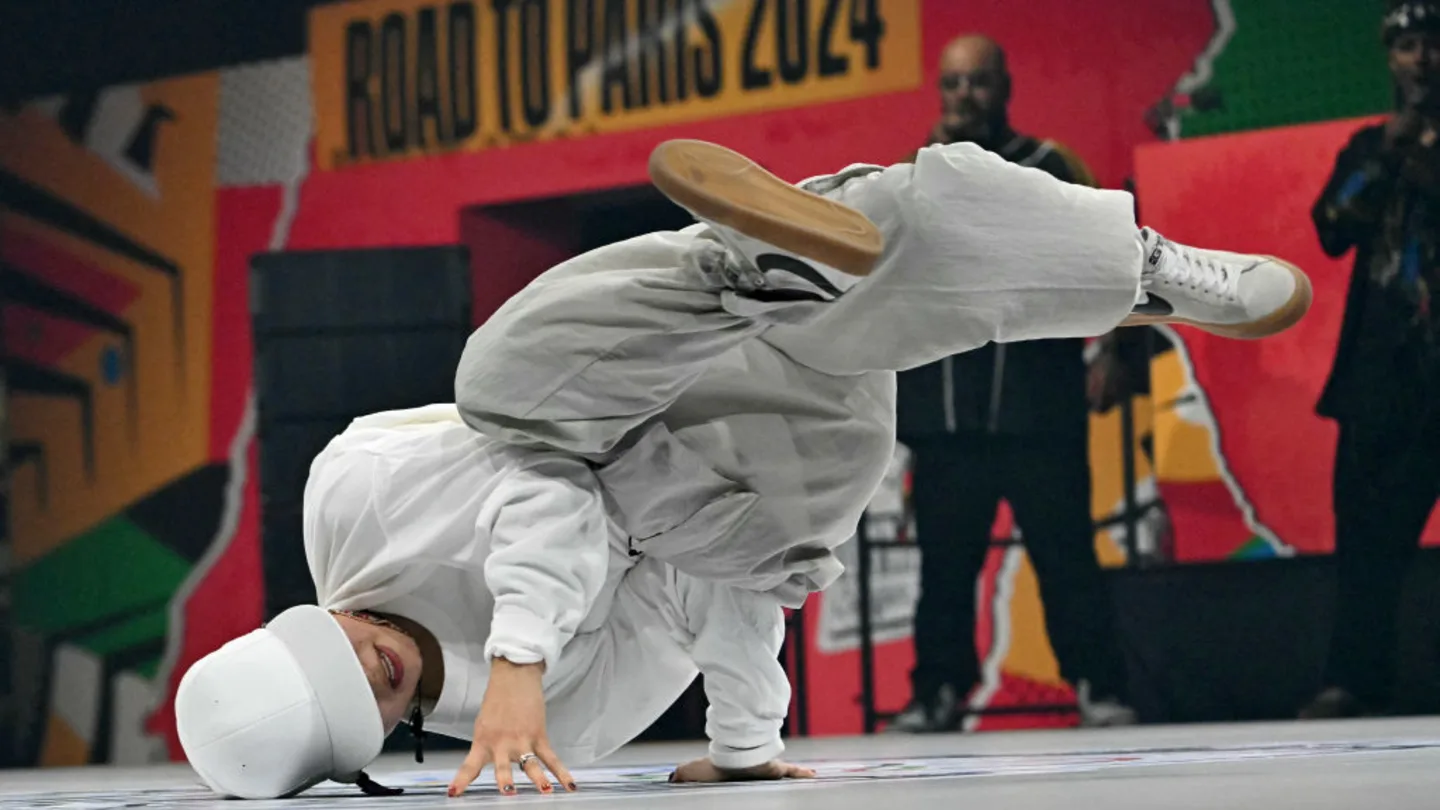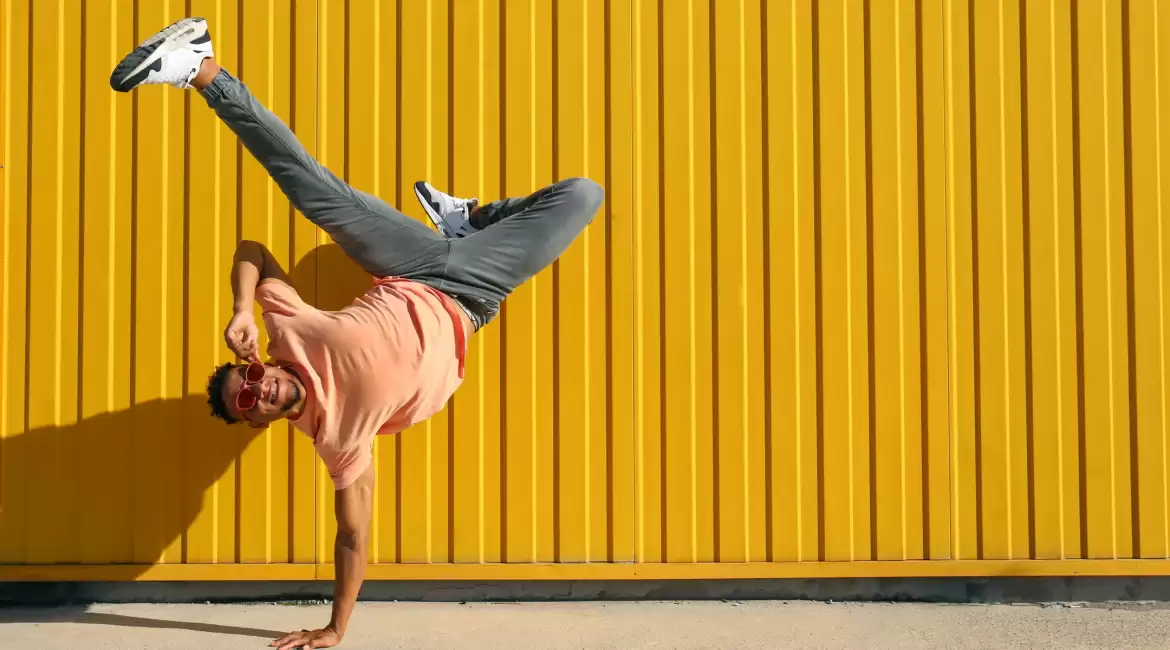13 Terms Every B-Boy/B-Girl Should Know
Breaking, also known as breakdancing, has come a long way since its inception in the 1970s. What started as a form of street dance has now evolved into a globally recognized art form and sport. With breaking set to make its debut as an Olympic sport at the 2024 Summer Games in Paris, it’s the perfect time to familiarize yourself with some essential terminology. Whether you’re a curious spectator or an aspiring b-boy or b-girl, this guide will help you understand the lingo of the breaking world.
Breaking
Let’s start with the basics. “Breaking” is the preferred term used by practitioners and purists of the art form. It’s a shortened version of “breakdancing,” which became popular in the media but is considered less authentic within the community.
Breaking originated in the Bronx, New York, during the 1970s. It emerged as part of hip-hop culture, alongside other elements like DJing, MCing, and graffiti art. The term “break” refers to the musical breaks in songs that DJs would loop to create extended instrumentals for dancers to showcase their moves.
Breaking involves a combination of top rock (dancing while standing), footwork, power moves (acrobatic moves), and freezes. It’s characterized by its improvisational nature and its blend of athleticism, creativity, and musicality.

B-boy / B-girl
These terms refer to male and female breakers, respectively. The “B” in b-boy and b-girl stands for “break,” as in the break in the music where these dancers would showcase their moves.
The origins of these terms are closely tied to the beginnings of hip-hop culture. DJ Kool Herc, one of the pioneers of hip-hop, is credited with coining the term “b-boy” in the early 1970s. He used it to describe the dancers who would wait for the break sections in the music to hit the dance floor and show off their most impressive moves.
Over time, the terms b-boy and b-girl have come to represent not just breakers, but also individuals who embody the culture and lifestyle associated with breaking and hip-hop in general.

Toprock
Toprock refers to any footwork performed from a standing position. It’s typically the opening section of a breaker’s set, used to establish rhythm, showcase style, and set up transitions to floor moves.
Toprock can include a wide variety of steps and movements, often incorporating influences from other dance styles like salsa, tap, or even martial arts. Some common toprock moves include the Indian Step, the Brooklyn Rock, and the Saltosoul.
The style and execution of toprock can vary greatly between dancers and often reflects their personality and approach to breaking. A breaker’s toprock is considered a crucial part of their overall style and can be just as important as their power moves or freezes.
Downrock
Also known as footwork or floorwork, downrock refers to the moves performed with the hands and feet on the floor. This is where breakers showcase their intricate footwork patterns, speed, and control.
Common downrock moves include the 6-step, 3-step, CC’s, and zulu spins. These moves require a high level of coordination and stamina, as breakers often perform rapid sequences of steps while supporting their body weight on their hands.
Downrock is not just about the complexity of the steps; it’s also about how smoothly a breaker can transition between different moves and how well they can express the music through their movements.
Power Move
Power moves are the spectacular, acrobatic movements that often come to mind when people think of breaking. These moves involve rotating the body in ways that appear to defy gravity and physics.
Some of the most well-known power moves include:
- Windmill: The breaker rolls their torso in a circular path on the floor while twirling their legs in a V-shape through the air.
- Headspin: Spinning on the head while the body is inverted and the legs are typically held in a V-shape.
- Flare: A move borrowed from gymnastics where the breaker circles their legs around their body while using their arms to hover above the ground.
- Air Flare: An advanced variation of the flare where the breaker performs the move without touching the ground, essentially “flying” through the air.
Power moves require significant strength, flexibility, and practice to execute safely and effectively. They often serve as the climax of a breaker’s set and can be incredibly impressive to watch.
Freeze
A freeze is a move where the breaker suddenly stops all motion and holds a fixed position. Freezes are often used to punctuate a sequence of moves or to end a set with a dramatic flourish.
There are numerous types of freezes, each requiring different levels of strength and balance. Some common freezes include:
- Baby Freeze: The breaker balances on one hand and the side of their head, with their legs held off the ground.
- Chair Freeze: The breaker supports their body on one hand, with their legs folded as if sitting in an invisible chair.
- Hollowback: An advanced freeze where the breaker arches their back deeply while balancing on their hands, creating a “hollow” shape with their body.
The ability to hit and hold freezes cleanly is a key skill in breaking. A well-executed freeze can be just as impressive as the most dynamic power move.
Set
In breaking, a set refers to a prepared sequence of moves that a breaker has choreographed and practiced. While breaking emphasizes improvisation, many breakers develop sets to showcase their best moves and ensure they have a solid foundation to build upon during battles or performances.
A typical set might start with toprock, transition into downrock, incorporate some power moves, and end with a freeze. However, the structure can vary greatly depending on the individual breaker’s style and strengths.
Sets are particularly important in breaking competitions, where breakers often have a limited time to impress the judges. A well-crafted set allows a breaker to demonstrate their skills efficiently and effectively.

Battle
Battles are competitive face-offs between breakers or crews. They’re a fundamental part of breaking culture and serve as a platform for breakers to showcase their skills, creativity, and style.
In a typical battle format, breakers take turns performing short sets, trying to outdo their opponents. Judges evaluate the performances based on criteria such as technique, creativity, musicality, and overall style.
Battles can be one-on-one, crew vs. crew, or in other formats depending on the event. They range from informal cyphers in practice sessions to major international competitions with significant prizes at stake.
The competitive aspect of battles has been a driving force in the evolution of breaking, pushing breakers to constantly innovate and improve their skills.
Cypher
A cypher (also spelled cipher) is a circular formation of breakers who take turns dancing in the center. Cyphers are a crucial part of breaking culture, serving as a space for practice, improvisation, and community building.
In a cypher, breakers enter the circle spontaneously to showcase their moves, often in response to or building upon what the previous dancer did. This creates a dynamic, interactive environment that encourages creativity and pushes breakers to perform at their best.
Cyphers can happen anywhere breakers gather – at practice sessions, parties, or even on the street. They’re less formal than battles but can be just as competitive, with breakers striving to impress their peers and earn respect within the community.

Foundation
In breaking, foundation refers to the basic moves and concepts that form the core of the dance. Having a strong foundation is considered essential for any serious breaker.
Foundation moves include basic toprock steps, fundamental footwork patterns like the 6-step and 3-step, and simple freezes. Beyond specific moves, foundation also encompasses an understanding of breaking’s history, music, and cultural context.
Mastering these foundational elements allows breakers to develop their own style and tackle more advanced moves with proper technique. Many experienced breakers emphasize the importance of continuously practicing and refining these basics, even as they progress to more complex moves.
Flavor
Flavor refers to a breaker’s individual style and personality as expressed through their dancing. It’s what makes each breaker unique and distinguishes them from others who might be performing the same moves.
Flavor can be seen in the way a breaker executes their moves, their musical interpretation, their attitude, and even their facial expressions while dancing. It’s not just about what moves a breaker does, but how they do them.
Developing one’s own flavor is a key aspect of progressing in breaking. While beginners often focus on copying moves exactly, more experienced breakers are expected to put their own spin on things and develop a distinctive style.
Musicality
Musicality in breaking refers to how well a breaker interprets and expresses the music through their dancing. This involves more than just staying on beat; it’s about responding to the nuances of the music, hitting accents, and capturing the overall feeling of the track.
Good musicality might involve:
- Matching the energy of the music with the intensity of one’s movements
- Hitting specific sounds or breaks in the music with appropriate moves
- Changing the pace or style of dancing to reflect changes in the music
Musicality is highly valued in breaking and is often a key criterion in judging battles. A breaker with excellent musicality can make even simple moves look impressive by executing them in perfect harmony with the music.
Biting
In breaking culture, “biting” refers to copying another breaker’s moves, style, or ideas without giving credit. It’s generally frowned upon and can damage a breaker’s reputation if they’re seen as unoriginal or lacking their own style.
However, the concept of biting is nuanced in breaking. Learning by imitating others is a natural part of the learning process, and many moves are considered part of the common vocabulary of breaking. The issue arises when a breaker copies distinctive or signature moves without acknowledgment, or fails to develop their own style over time.
The breaking community generally encourages breakers to study and learn from others, but to ultimately develop their own flavor and contribute something unique to the dance.
Understanding these terms will give you a solid foundation for appreciating the intricacies of breaking, whether you’re watching it at the Olympics or in a local cypher. Remember, though, that breaking is a rich and complex culture with much more depth than can be captured in a single list of terms. The best way to truly understand breaking is to immerse yourself in the culture – watch battles, attend events, and maybe even try some moves yourself!
As breaking continues to evolve and gain recognition on the global stage, it remains rooted in its origins as a form of cultural expression and community building. Whether you’re a casual fan or an aspiring breaker, having this vocabulary will enhance your appreciation of this dynamic and exciting dance form.


Leave a reply